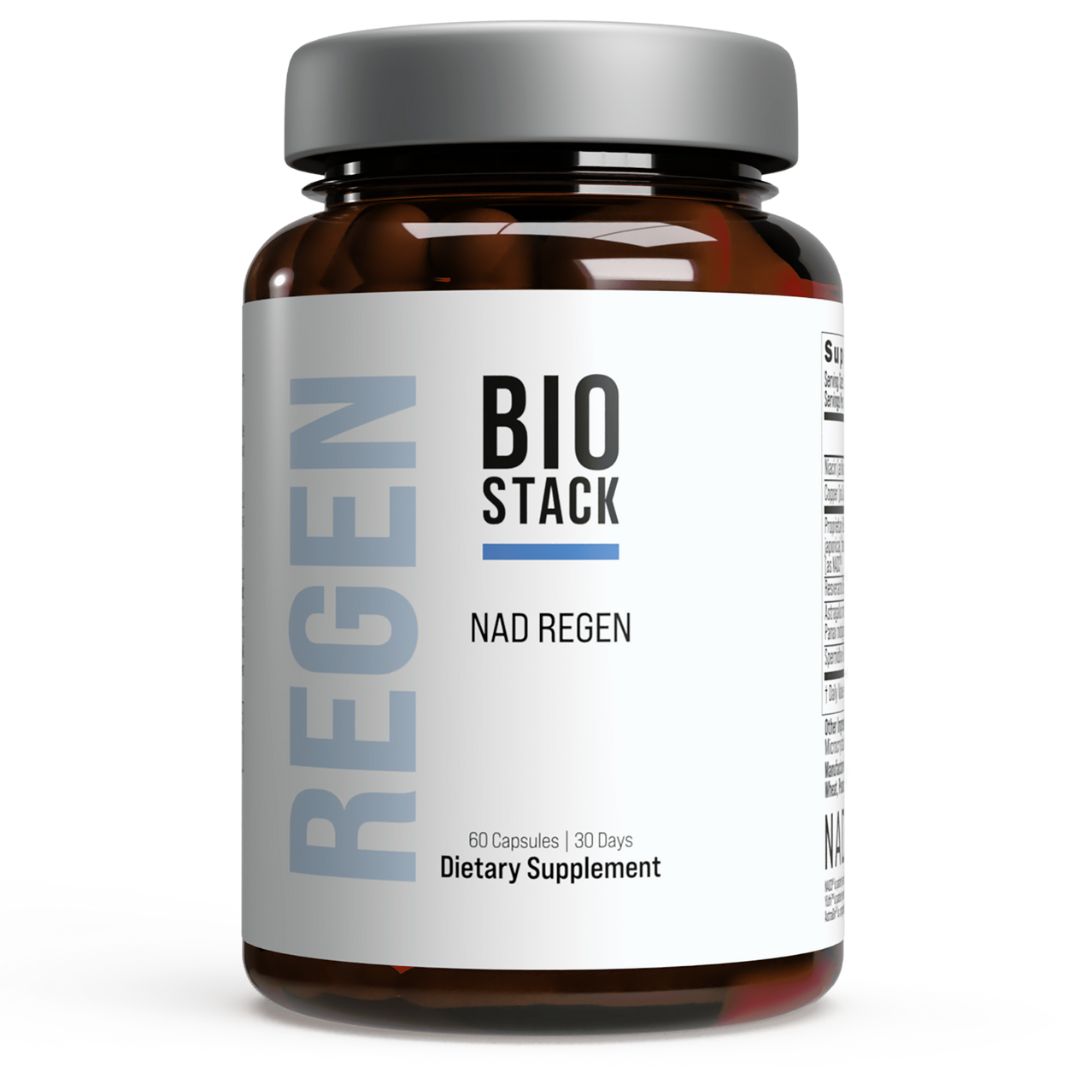Your Cart is Empty
FREE US Shipping Orders > $150
FREE US Shipping Orders > $150
Where Does Nad Come From
January 09, 2025 5 min read
Introduction
NAD⁺ (nicotinamide adenine dinucleotide) is a vital coenzyme found in every living cell. It plays an essential role in energy production and acts as a helper molecule in many cellular processes such as metabolism, DNA repair, and cell signaling. While NAD⁺ is best known for its ability to carry electrons during redox reactions—cycling between its oxidized (NAD⁺) and reduced (NADH) forms—it also participates in nonredox functions such as ADP‑ribosylation and deacetylation by sirtuins.
Because these nonredox reactions permanently break down NAD⁺, cells must continuously replace it. They do so via several biosynthetic pathways that use various precursors—including vitamin B₃ forms like nicotinamide, nicotinic acid, nicotinamide riboside (NR), and nicotinamide mononucleotide (NMN). As we age, however, the levels of NAD⁺ in our cells gradually decline, and numerous studies suggest this decline links to age‑related diseases including diabetes, heart disease, and neurodegeneration.

Cutting edge NAD+ Supplement
Increases Energy, Enhances Cognitive Function, and supports healthy aging.
Learn MoreHistory of NAD⁺
NAD⁺ has been studied for over a century. It was first observed in 1906 by Arthur Harden and William John Young while investigating the role of yeast extracts in fermentation. Later, Otto Warburg and his colleagues revealed that NAD⁺ is the primary hydride acceptor in many essential metabolic reactions.
In the 1930s, scientists discovered that dietary deficiencies in vitamin B₃ (niacin) caused pellagra—a disease characterized by dermatitis, diarrhea, and dementia. This led to the realization that NAD⁺ precursors play a critical role in human health. By the 1950s, researchers had mapped out key NAD⁺ biosynthetic pathways, such as the Preiss–Handler pathway (which converts nicotinic acid to NAD⁺) and what would later come to be known as the salvage pathway (which recycles nicotinamide).

Cutting edge NAD+ Supplement
Increases Energy, Enhances Cognitive Function, and supports healthy aging.
Learn MoreNAD⁺ Biosynthesis
Cells synthesize NAD⁺ through several interconnected pathways:
- De Novo Pathway: In this route, the amino acid tryptophan is converted to NAD⁺ via a series of intermediate compounds.
- Preiss–Handler Pathway: This pathway starts with nicotinic acid, converting it into NAD⁺ in three enzymatic steps.
- Salvage Pathway: The most critical for human cells, this route recycles nicotinamide—the byproduct formed when NAD⁺ is used by various enzymes—back into NAD⁺. Enzymes like nicotinamide phosphoribosyltransferase (NAMPT) and nicotinamide riboside kinases (NRK) are essential components of this cycle.
Understanding these biosynthetic pathways is crucial because they form the foundation upon which research into NAD⁺ replenishment strategies and supplementation is built.

Cutting edge NAD+ Supplement
Increases Energy, Enhances Cognitive Function, and supports healthy aging.
Learn MoreNAD⁺-Dependent Processes
Beyond energy production, NAD⁺ is used by critical enzymes like:
- Sirtuins: These proteins depend on NAD⁺ to remove acetyl groups from histone and non-histone proteins, affecting gene expression, metabolism, and aging.
- Poly(ADP‑ribose) Polymerases (PARPs): PARPs use NAD⁺ to add ADP‑ribose units to proteins, a process crucial for DNA repair.
- Ecto‑NADase Family (e.g., CD38 and CD157): These enzymes work on the cell surface to convert NAD⁺ and its metabolites into molecules that help mobilize calcium—a vital second messenger in cellular signaling.
Each of these processes consumes NAD⁺, making its constant replenishment vital for maintaining cellular health and proper physiological function.

Cutting edge NAD+ Supplement
Increases Energy, Enhances Cognitive Function, and supports healthy aging.
Learn MoreCompartmentalization of NAD⁺
NAD⁺ is not distributed uniformly inside a cell. It is compartmentalized into different regions:
- Nucleus and Cytosol: These compartments share similar NAD⁺ levels since the nuclear membrane is permeable to the molecule.
- Mitochondria: Mitochondria hold a higher concentration of NAD⁺ because this pool is dedicated to fueling processes like the tricarboxylic acid (TCA) cycle and oxidative phosphorylation.
- Peroxisomes and Endoplasmic Reticulum (ER)/Golgi: Recent research has uncovered NAD⁺ pools in these organelles, though their functions are less understood.
The compartmentalization impacts how NAD⁺ is used. For example, mitochondrial NAD⁺ is primarily generated inside the mitochondria, and special transporters may be required to move precursors into these compartments.

Cutting edge NAD+ Supplement
Increases Energy, Enhances Cognitive Function, and supports healthy aging.
Learn MoreImplications for Aging and Health
Numerous studies show that NAD⁺ levels decline with age. This decrease in NAD⁺ correlates with reduced mitochondrial function, impaired DNA repair, and diminished cell signaling—all of which contribute to various age-related diseases. Restoring NAD⁺ levels through lifestyle changes or supplementation with NAD⁺ precursors (such as NR and NMN) has been shown in animal studies to boost cellular metabolism and improve healthspan.
Emerging clinical trials in humans are investigating whether these benefits translate into improved health and longevity in people. Maintaining healthy NAD⁺ levels may represent a promising approach to mitigating chronic diseases associated with aging.

Cutting edge NAD+ Supplement
Increases Energy, Enhances Cognitive Function, and supports healthy aging.
Learn MoreConclusion
NAD⁺ is far more than a simple molecule involved in redox reactions—it is a central player in a wide variety of cellular processes. From its role in energy production to its function in regulating key enzymes that protect against aging and disease, NAD⁺ stands at the crossroads of metabolism, cellular repair, and signaling. As research continues, strategies to boost and maintain NAD⁺ levels may become crucial tools for promoting a healthier, longer life.

Cutting edge NAD+ Supplement
Increases Energy, Enhances Cognitive Function, and supports healthy aging.
Learn More